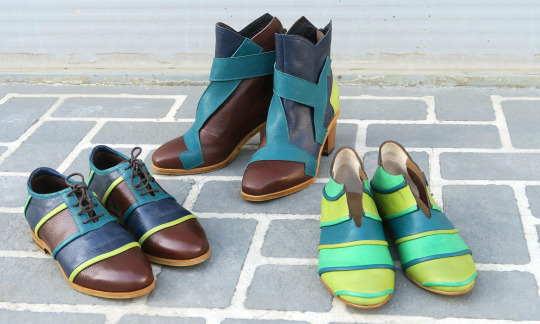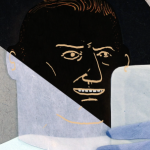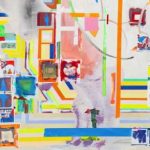Conversations | Gisela Insuaste
“Support for local artists and makers brings people together to create change.”
For Immigrant Artist Mentoring Program: Oakland consultant Gisela Insuaste, all experiences can inform her practice, from a bike ride in the hills to a leisurely walk along a lake or a plane ride across the ocean. Born and raised in New York City by Ecuadorian parents, she is an artist, arts administrator, educator, and cultural producer, who works as a Communications & Program Specialist at the Center for Cultural Innovation (CCI).
Read our interview below to learn about Insuaste’s experience moving from New York City to the East Coast five years ago, and the importance of connecting with the landscape and the people.
NYFA: Can you tell us about your experience moving from the East Coast to the West Coast?
Gisela Insuaste: Moving to the West Coast was a lot harder than I anticipated. I moved out here for love, and didn’t have anything set up for myself.
The biggest initial challenge was feeling disconnected to the landscape and as a result, to the people around me. I really didn’t know who my community was (Latinx, artists, outdoor enthusiasts, educators, etc.) or where/how I “fit” in this landscape. New York City has so many diverse art spaces and art-making practices and conversations on a range of different issues and themes, ranging from conceptual to literal to abstract modes of expression and execution using diverse media. Having lived in a large metropolitan city with a large immigrant population, with many cultural institutions, and resources/funding opportunities for artists and communities, the Bay Area is a very different place altogether. In the Bay Area, I felt that the range of art-making and expression was different—less international and more regionally-focused. Well, what I didn’t realize then and realize now, is that the local matters tremendously, and support for local artists and makers brings people together to create change.
Having a supportive and creative partner who also loves the outdoors and biking has also been a tremendous factor in this transition. He keeps it real for me. He has questioned my New York-centric mentality and has encouraged me to develop my interests out here. Moving to the West Coast and reinventing yourself is something that many people have done before me and, honestly, I didn’t want to reinvent myself—I liked who I was. This place has helped me to reflect and develop my interests, as well as prioritize what’s important to me right now, experimenting with creative practices, and leading a lifestyle that reflects my values and love of art, music, nature, and people that inspire me to be involved in my community. The landscape in which I find myself has a strong pull to dig deeper and connect with people around you but also question and challenge injustices you see.
Five years later and I feel very fortunate to be in Oakland, it has been transformative on many levels.

NYFA: You are an artist, arts administrator, educator, and cultural producer. How do you balance your administrative work with your artistic practice?
GI: I think of them as part of my identity as a human being (and engaged in activities that are important to me), and avoid thinking of these as separate, vying for my time and energy. I see them in collaboration.
Ideally, the administrative work connects, informs, or inspires my artistic practice and vice-versa, but most importantly, aligns with my values. Actually, that’s the case for all activities, relationships, etc. in my life. I’d like to say that once your values are aligned, then everything is perfect! But that’s not the case—it’s also about time management and prioritizing the work, making adjustments, always. Sometimes, administrative work will require more time, while a creative project takes back seat. Shifting gears for a 35-mile bike ride in the hills is just as important if your body and mind need to be outdoors.
To go back to your question, I would rephrase it as how do I manage my administrative work and artistic practice or work in collaboration with other parts of my life—I would say by keeping a detailed calendar and making adjustments as needed to the amount of time I spend on activities in relation to the goals/tasks I want to accomplish for that day, week, etc. and being aware of my personal well being and mental health throughout.
A good practice for me is to take moments to play and socialize during intense work, either in the office or studio, with friends or colleagues. If need be, set parameters with people or spaces to manage time—decide what’s important to get the work done and surround yourself with what you think you’ll need. Assess where you’re at with your projects/personal well-being. Sleep, eat well. Go outdoors for a walk and get some Vitamin D!
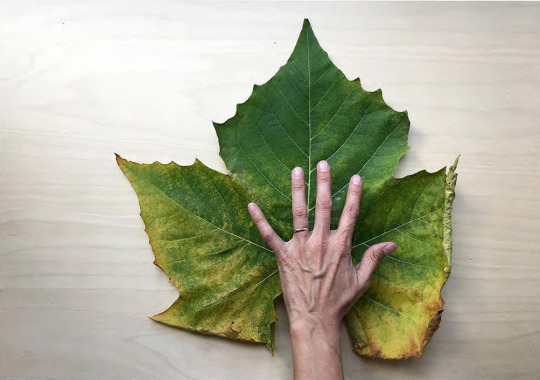
NYFA: What is your current role at the Center for Cultural Innovation (CCI)?
GI: I recently started working at CCI, a non-profit arts organization that promotes knowledge-sharing, networking, and financial independence for artists and creative entrepreneurs. CCI is based in Los Angeles with an office in San Francisco. I’m still relatively new in my role as the Communications & Program Specialist. So far, I’ve had quite an experience working with grantmaking, professional development workshops, program development, and communications, including sharing the different CCI opportunities and resources for artists. After leaving the San Francisco Arts Commission in late 2017, I took a sabbatical from arts administration to engage in my creative practice, to explore, and to connect with the Bay Area differently. When I decided to step back into arts administration, I was interested in working with an organization that supports artists and their professional development, and learning about alternative economic systems that artists, especially POC (people of color) artists.
NYFA: Do you have resources and advice to share with immigrant artists?
GI: As POC and immigrant artists, we already bring so much knowledge and experiences to a new place and community. It may take some time to adjust and find your people but know that you have a lot to offer and share.
Take advantage of all those free activities offered by arts organizations and cultural institutions such as open studios, convenings, screenings, artist lectures, etc.
Social media such as Facebook, Twitter, and Instagram are good places to find and share resources and opportunities about grants or residency opportunities, or interesting article posts about not only the arts field, but other issues and topics I find important (climate change, education, immigration, youth development, local news, etc.).
We don’t live in a vacuum, so avoid creating a bubble—find out what’s going on in other places outside your community and city, across the nation and the world, including your own country. It’s a way to keep informed and gauge the kind of conversations happening in different places. I’m fortunate to be connected not only to the East Coast but also the Mid-West and Latin America so I keep tabs on what’s going on in these areas, whether about politics or educational reforms.
But of course, interacting with people in real-time and in person is the best way to connect with others and learn a little about yourself in the process. I would recommend attending public events that you find interesting, including events in fields that may not be related to art but may intersect with your artistic practice. It’s okay to be awkward in new spaces—bring friends!
Sign up to receive newsletters from organizations, cultural institutions, libraries, city/state arts agencies, and artists/cultural workers and get the latest news, updates, events, and opportunities. Find out what’s happening on a local, regional, or national level and/or how to get involved. Examples: Art Practical, Creative Capital, Center for Cultural Innovation, Intersection for the Arts, California Arts Council, SF Arts Commission, Laundromat Project, A Blade of Grass, National Association of Latino Arts & Culture, Alliance for Artist Communities, and NYFA (of course), to name a few.
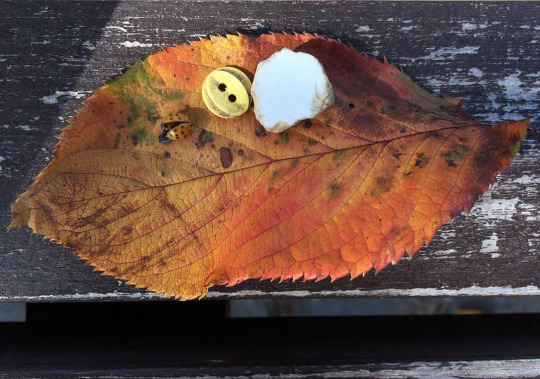
NYFA: Tell us about your upcoming commission with the NYC School Construction Authority, Public Art for Public School.
GI: The public art commission is a sculptural installation that will hang from the atrium of a new school addition at PS 254 in Sheepshead Bay, scheduled to open by August 2021. For the proposal, I was drawn to the history of the school’s neighborhood. The installation consists of a large suspended bridge-like sculpture inspired by the Ocean Avenue Bridge, a historic pedestrian footbridge that connects Sheepshead Bay to Manhattan Beach. This bridge represents a space of transition, with openness to new places and other neighborhoods. Like in my previous work, I am interested in how the landscape and built environments shape our experiences. Tentatively titled “Crossings & Bridges,” the sculpture functions like a drawing in space, a process that mirrors my walks through cities and spaces. Other suspended pieces will consist of local imagery such as native plants and architectural forms from the neighborhood. As part of the commission, I will also be leading several workshops with students that relate to my artistic process, including walking, observational drawing, and mapping.
– Interview Conducted by Alicia Ehni, Program Officer at NYFA Learning
This interview is part of the ConEdison Immigrant Artist Program Newsletter #118. Subscribe to this free monthly e-mail for artist’s features, opportunities, and events.
Images from top to bottom: Gisela Insuaste’s shoes designed during a Seoul, South Korea residency, photo by Seng Chen/Gisela Insuaste; Insuaste riding her bike up a steep hill, through the redwoods near San Francisco, photo by Seng Chen; Photo project/experimentation during a sabbatical, photo by Gisela Insuaste; Photo project/experimentation during a sabbatical, photo by Gisela Insuaste.


